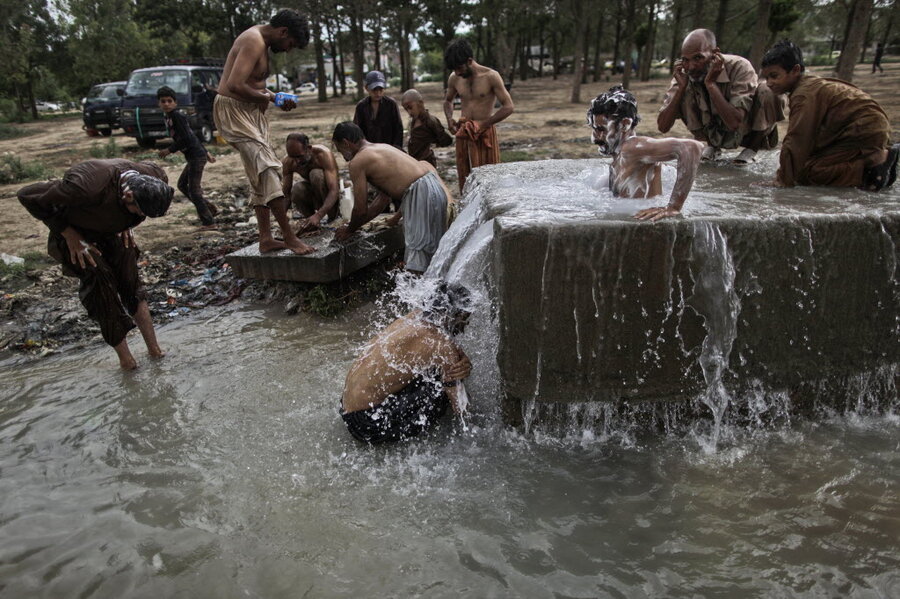Developing nations: First, find your 'green' energy, then develop it
Loading...
Pakistan’s Sindh province, where the Indus River slips into the Arabian Sea at the country's southern border, is hot. In winter, the monsoon rains that dance into coastal Pakistan soak the region.
This is a country that should be a wind and solar power hot spot. Instead, it is one where some one-third of the population does not have access to electricity.
But a new program from the World Bank aims to address the disconnect between developing countries’ abundant renewable resources and lagging progress in harnessing those resources to power economic development. Nine countries, including Pakistan, are set to partner with the World Bank in its Renewable Energy Mapping Program, which is putting $11.6 million toward the gathering of the hard data those countries need to pursue their ambitious sustainability projects. It's an initial step – though probably not a sufficient one – to push developing nations to choose renewable energy sources over fossil fuels.
Electricity shortages and unreliable water continue to stifle economic progress in many parts of the world – schools cannot open; hospitals struggle; businesses fold; and foreign investment goes elsewhere. Some 1.2 billion people worldwide lack access to electricity, with just 20 countries in Asia and Africa accounting for some two-thirds of those people.
Meanwhile, global climate change disproportionately punishes the world's poor. Temperatures are expected to rise by as much as 4 degrees C (7.2 degrees F.) above pre-industrial levels by 2090, according to a separate World Bank report released Wednesday. That increase would devastate crop production in broiling sub-Saharan Africa, flood cities and low-lying rice paddies in Southeast Asia, and deprive South Asia of much of the snowmelt that irrigates its farmland.
The findings give new urgency to plumbing global opportunities not just for more energy – but for more sustainable energy, where progress has lagged in much of the developing world. The 48 countries in sunny and windy sub-Saharan Africa, for example, have harnessed a wind and solar power output similar to Spain's, even though they have a population 20 times as large, according to the African Development Bank Group.
“We expect this initiative to be highly catalytic,” Oliver Knight, senior energy specialist at the World Bank's Energy Sector Management Assistance Program, said in a press release. “Resource mapping is a crucial step in providing the resource and policy certainty that commercial developers need to scale up investment in renewables.
Over the next four years, the Renewable Energy Mapping Program aims to map the solar, wind, biomass, and small hydropower potential of each of the partnering countries, all of which are in Africa or Asia. The initiative hopes to build on sparse existing data on available resources, beginning with on-the-ground-based data collection. To collect solar and wind resource data, for example, researchers will install wind masts and pyrometers (which measure solar energy) at strategic points in the regions. That data will then be mapped in a visual representation of resources and incorporated into state-specific strategies for clean-energy use.
Still, the reasons for which sustainable development initiatives have stalled in the world’s poor corridors are broader than a lack of data. The bigger challenge: Fossil fuels remain cheaper than renewable energy options and are still more accessible for developing countries.
“One thing to be concerned about with development is that the pattern and shape of the developed world would not exist without fossil fuels, and the developing world is going to replicate that unless something changes,” Scott Barrett, an economist at Columbia University, said in a telephone interview.
Though the world’s rich countries have pledged substantial sums for renewables development in the developing world, there is no formal system in which they can encourage it by paying the difference between cheap fossil fuels and more expensive renewable energy sources, Professor Barrett said. Until then, even with the World Bank’s new data, cheap fossil fuels will often remain the most attractive option in fiscally strapped countries, he said.
The participating countries are Indonesia, Lesotho, Madagascar, Maldives, Pakistan, Papua New Guinea, Tanzania, Vietnam, and Zambia.






